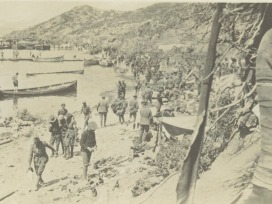
Indigenous Australians were excluded from joining military service under the Commonwealth Defence Act of 1903 (and further amendments). This prevented people ‘not substantially of European origin or descent’ from enlisting in military service. After the failure of the first conscription referendum, changes made in 1917 allowed aboriginal men with one white parent to enlist. Despite the racial discrimination in legislation, many indigenous Australians enlisted from the beginning of the war, and continued to do so until the end of the conflict. Although it is impossible to be specific, as a person’s “race” was not recorded on enlistment papers, one source suggests that over a thousand aboriginal men enlisted. This included the over 70 Tasmanian Aboriginals identified so far. Researchers expect to find many more, as research continues.
The reasons Aboriginal men felt motivated to fight for a country that did not recognise them varied as widely as for any individual who volunteered. Their motivations to enlist included loyalty to country, adventure seeking, and payment.
Researchers have noted that once in the AIF, they were treated as equals, paid the same as other soldiers, and generally accepted without prejudice. Returning home after the First World War, Aboriginal ex-servicemen received little public or private support. They were denied access to soldier settlement schemes. In some states Native Welfare Agencies quarantined their wages and pensions. Sometimes they were denied access to military funerals, and the treatment they and their families received at ANZAC Day services and in the local RSLs varied depending on the attitudes of the local community.

